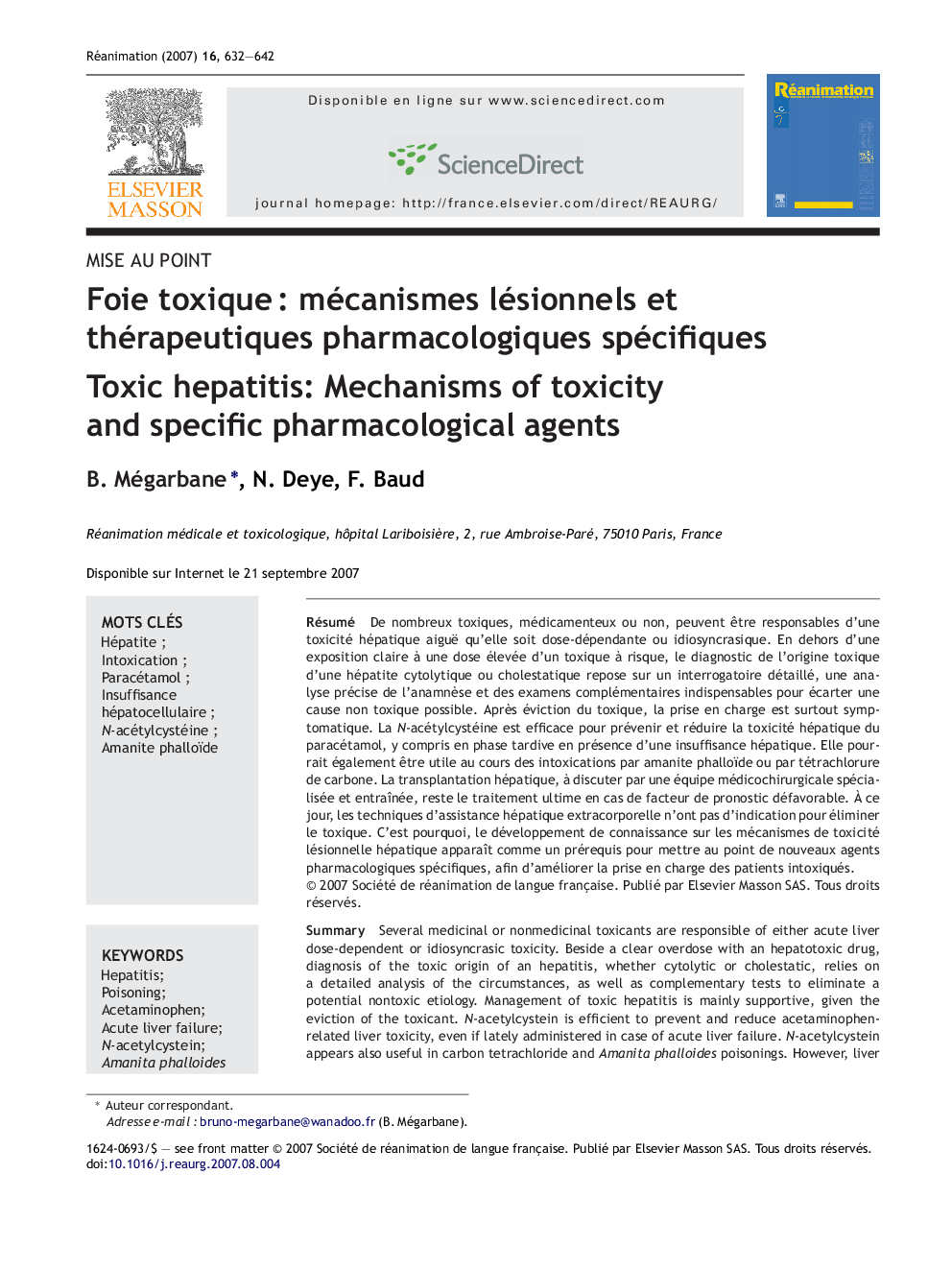| Article ID | Journal | Published Year | Pages | File Type |
|---|---|---|---|---|
| 2613846 | Réanimation | 2007 | 11 Pages |
Abstract
Several medicinal or nonmedicinal toxicants are responsible of either acute liver dose-dependent or idiosyncrasic toxicity. Beside a clear overdose with an hepatotoxic drug, diagnosis of the toxic origin of an hepatitis, whether cytolytic or cholestatic, relies on a detailed analysis of the circumstances, as well as complementary tests to eliminate a potential nontoxic etiology. Management of toxic hepatitis is mainly supportive, given the eviction of the toxicant. N-acetylcystein is efficient to prevent and reduce acetaminophen-related liver toxicity, even if lately administered in case of acute liver failure. N-acetylcystein appears also useful in carbon tetrachloride and Amanita phalloides poisonings. However, liver transplantation remains the ultimate therapy to be carried out by a specialized and trained medical and surgical team, in case of bad prognosis. To date, techniques of extracorporeal support for acute liver injury are not indicated to enhance toxicant elimination. Thus, improving knowledge regarding the mechanisms of liver toxic injuries remains mandatory to develop new specific pharmacological agents in order to optimize poisoning management.
Keywords
Related Topics
Health Sciences
Medicine and Dentistry
Emergency Medicine
Authors
B. Mégarbane, N. Deye, F. Baud,
